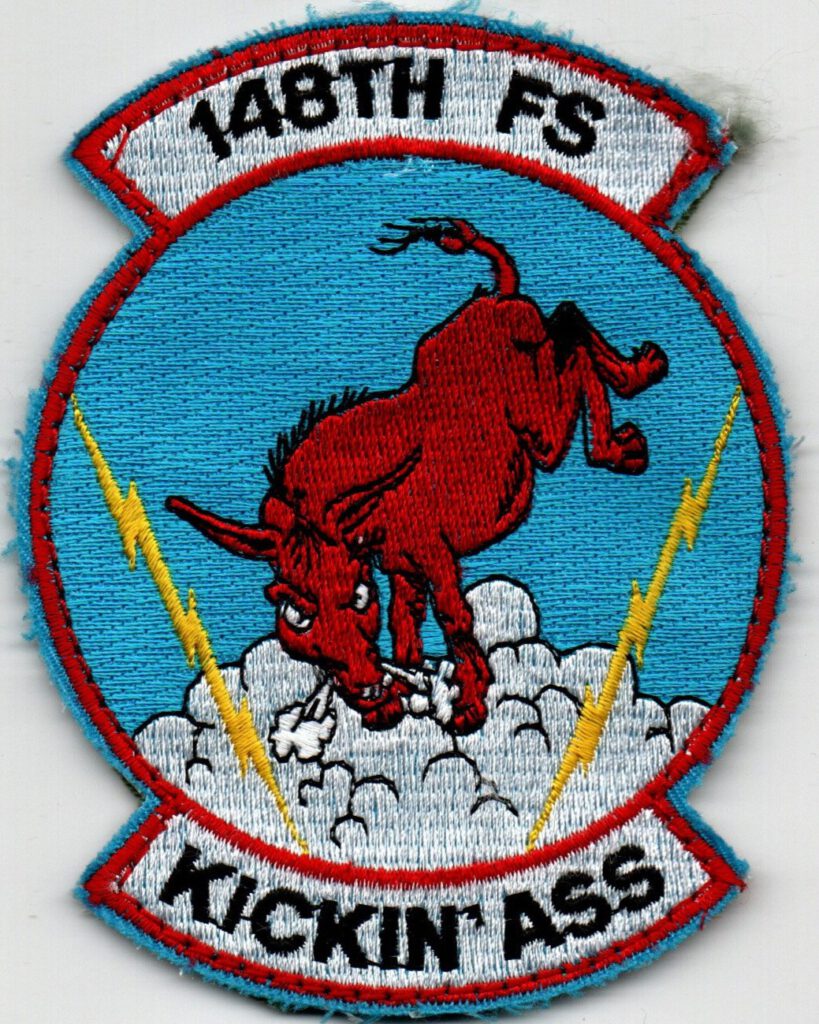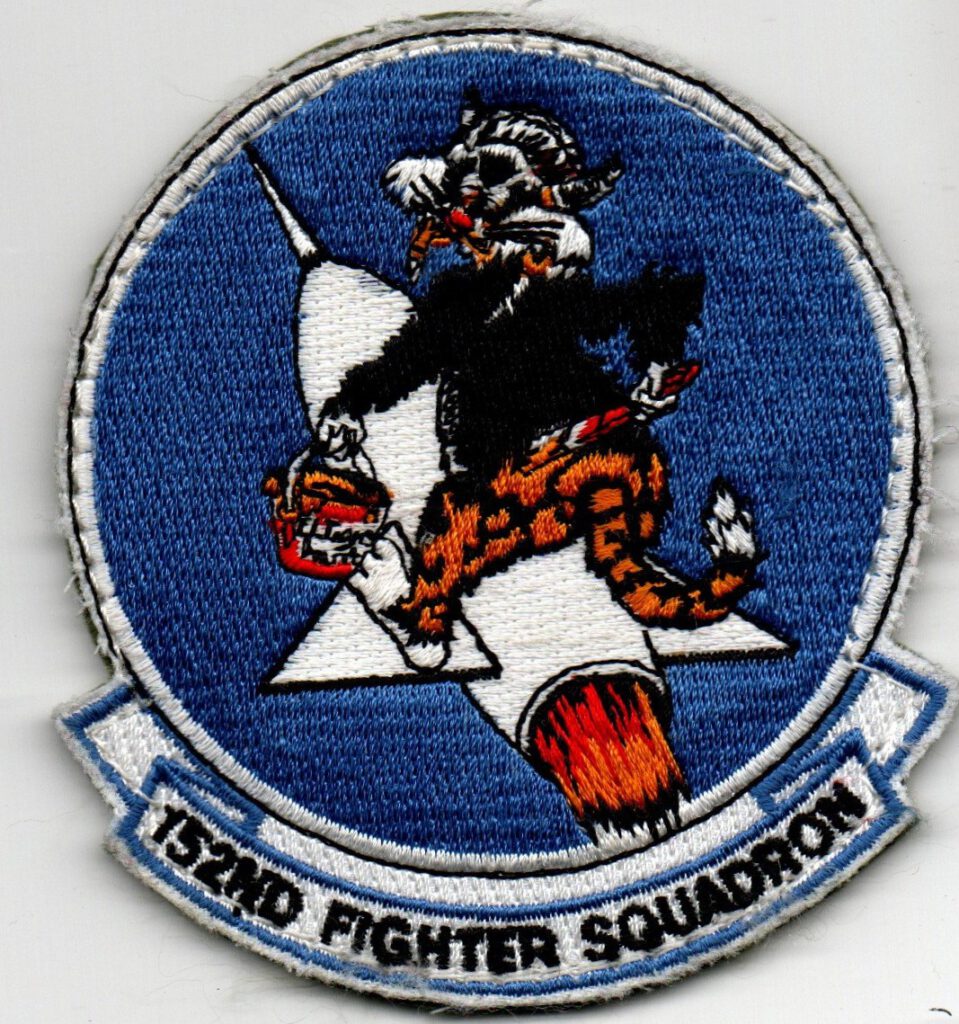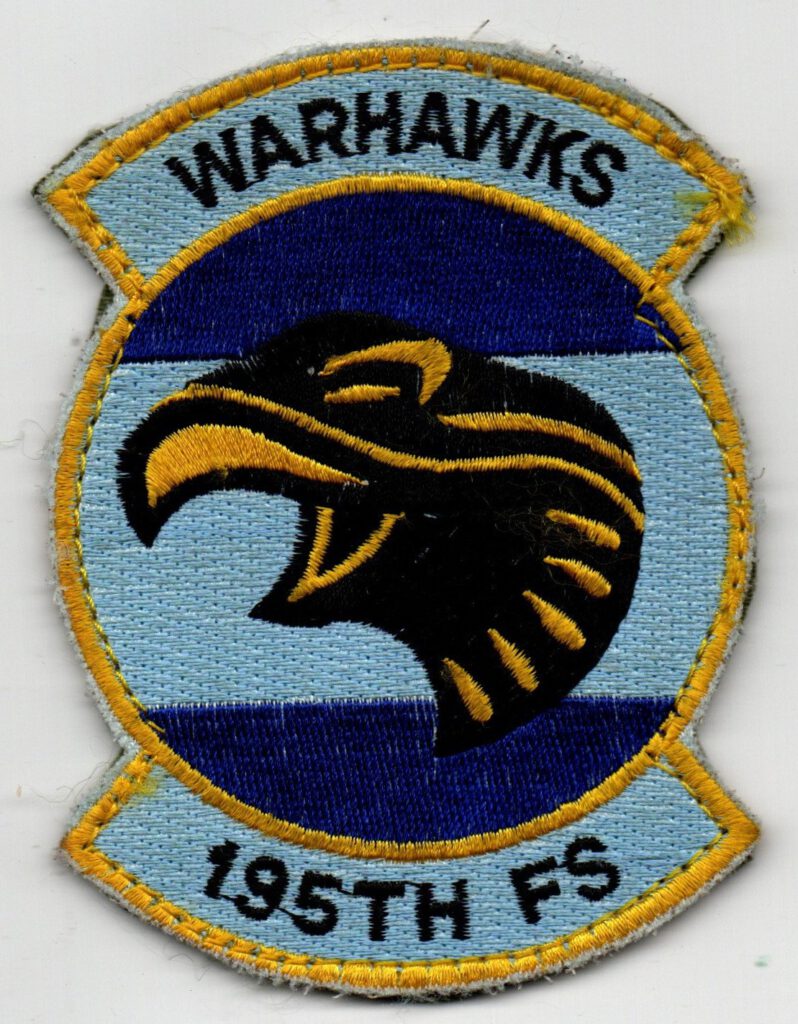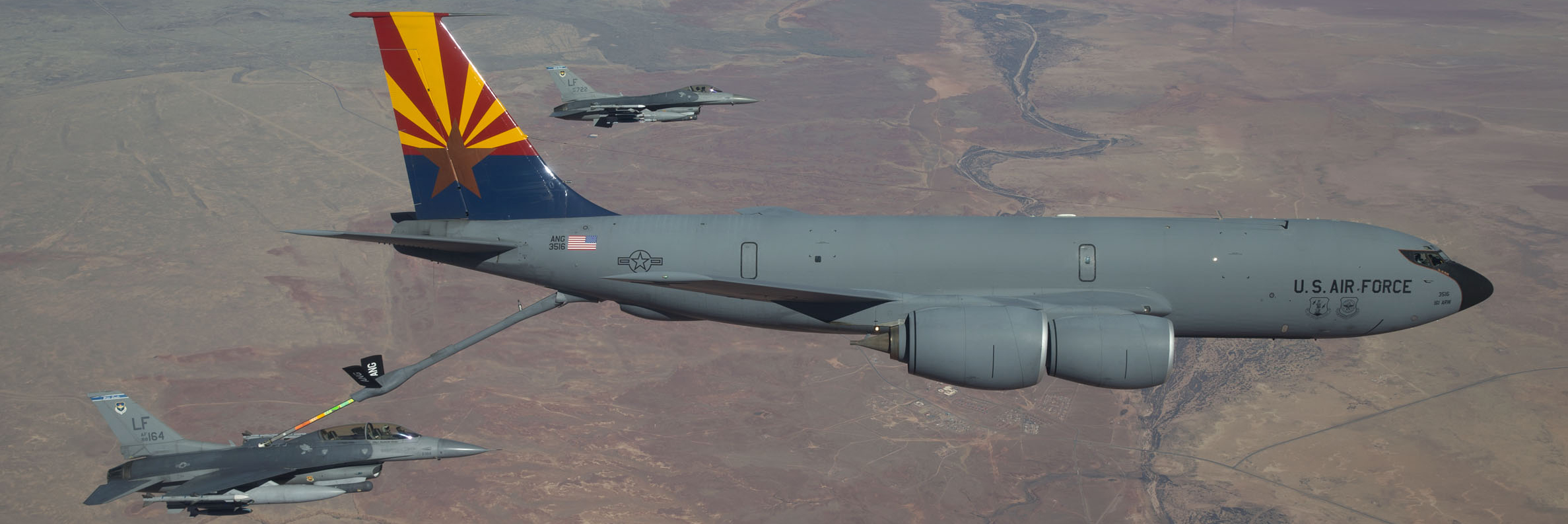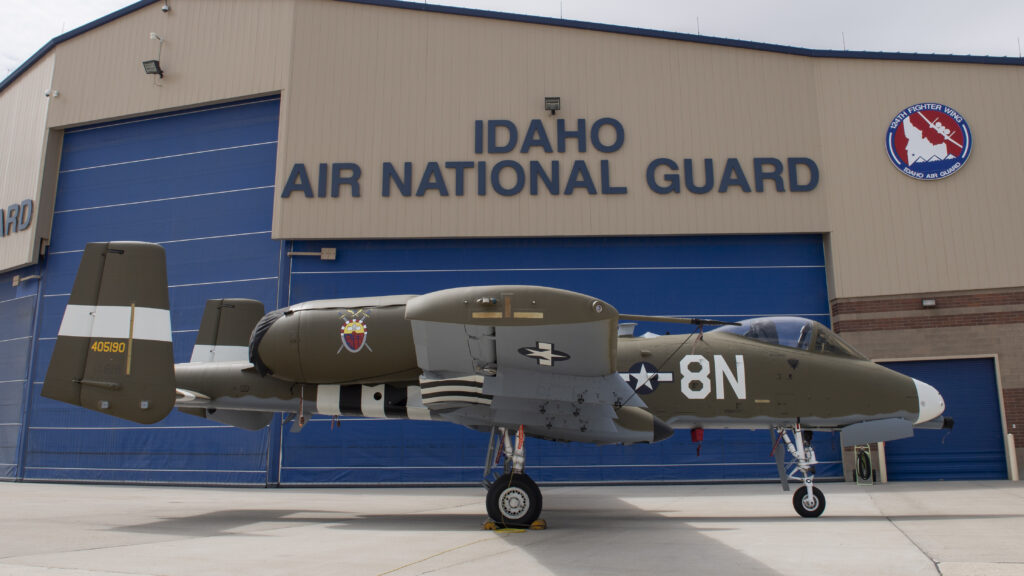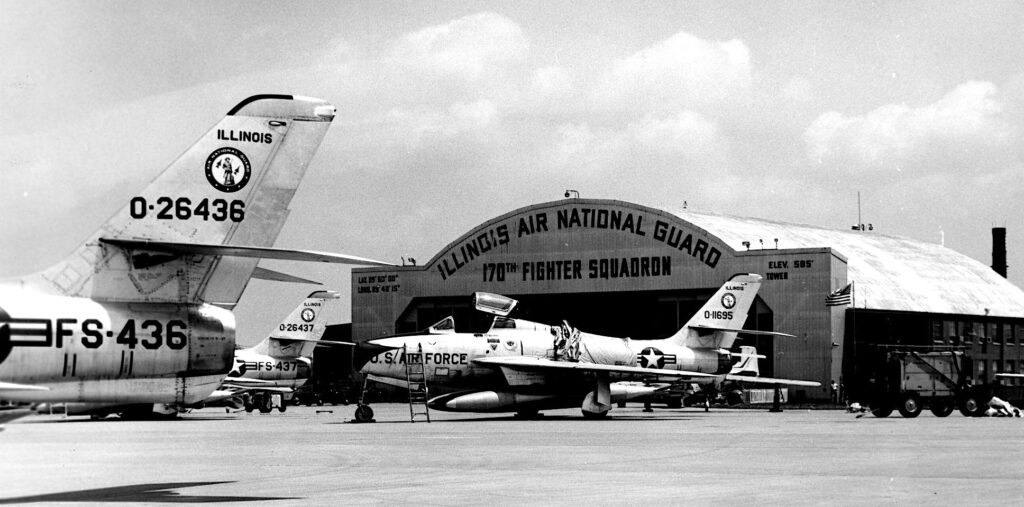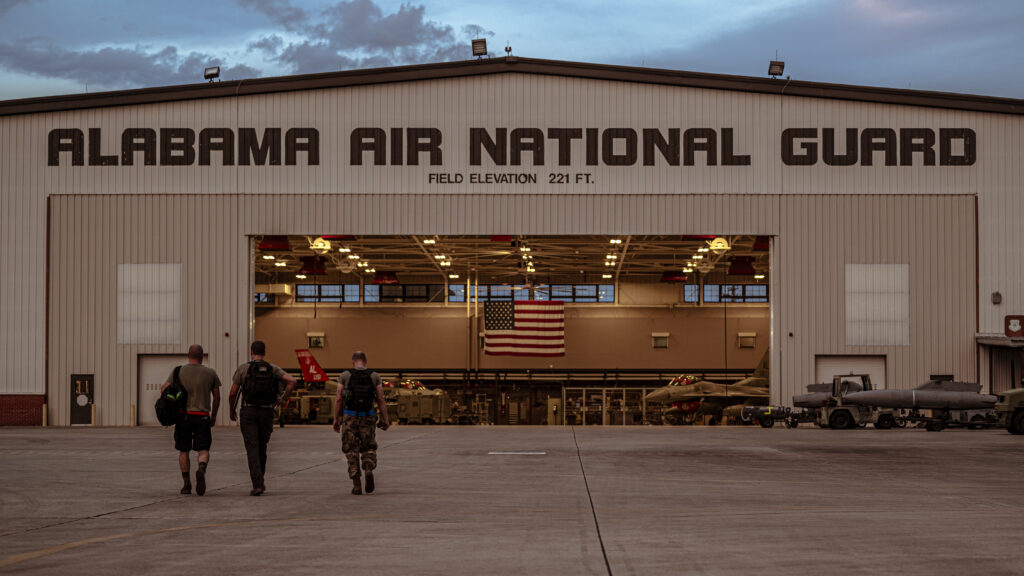The Arizona ANG was founded by Barry Goldwater, and its origins date to the formation of the 197th Fighter Squadron at Luke Army Airfield, Glendale, receiving federal recognition on 12 December 1946. It was equipped with F-51D Mustangs and its mission was the air defense of the state. 18 September 1947, however, is considered the Arizona Air National Guard’s official birth concurrent with the establishment of the United States Air Force as a separate branch of the United States military under the National Security Act.
Under Goldwater‘s direction, the Arizona ANG integrated in 1947, two years before President Truman’s Executive Order 9981 ending racial segregation in the United States Armed Forces. On 2 October 1957 the 197th Fighter-Interceptor Squadron was authorized to expand to a group level, and the 161st Fighter-Interceptor Group was allotted by the National Guard Bureau, extended federal recognition and activated.
Today, the Arizona ANG performs a worldwide air refueling mission, a homeland defense training mission and tactical battlefield reconnaissance missions. After the September 11th, 2001 terrorist attacks on the United States, elements of every Air National Guard unit in Arizona has been activated in support of the Global War on Terrorism. Flight crews, aircraft maintenance personnel, communications technicians, air controllers and air security personnel were engaged in Operation Noble Eagle air defense overflights of major United States cities. Also, Arizona ANG units have been deployed overseas as part of Operation Enduring Freedom in Afghanistan and Operation Iraqi Freedom in Iraq as well as other locations as directed.
The Arizona Air National Guard consists of the following major units:
The 161st Air Refueling Wing
The 161 ARW is a unit of the Arizona Air National Guard, stationed at Goldwater Air National Guard Base, Phoenix Sky Harbor International Airport, Arizona. If activated to federal service, the Wing is gained by the United States Air Force Air Mobility Command.
On 2 October 1957, the Arizona Air National Guard 197th Fighter-Interceptor Squadron was authorized to expand to a group level, and the 161st Fighter-Interceptor Group was established by the National Guard Bureau. The 197th FIS becoming the group’s flying squadron. In 1958 the Group received from ADC the all-weather/day-night F-86L Sabre Interceptor aircraft, and in 1960, the 197th was one of three selected ANG units to receive F-104A Starfighter interceptors from the ADC active-duty interceptor forces. The Copperheads, as a result of the national recognition as one of the best air defense units in the US, were chosen to fly the new high performance jet fighter.
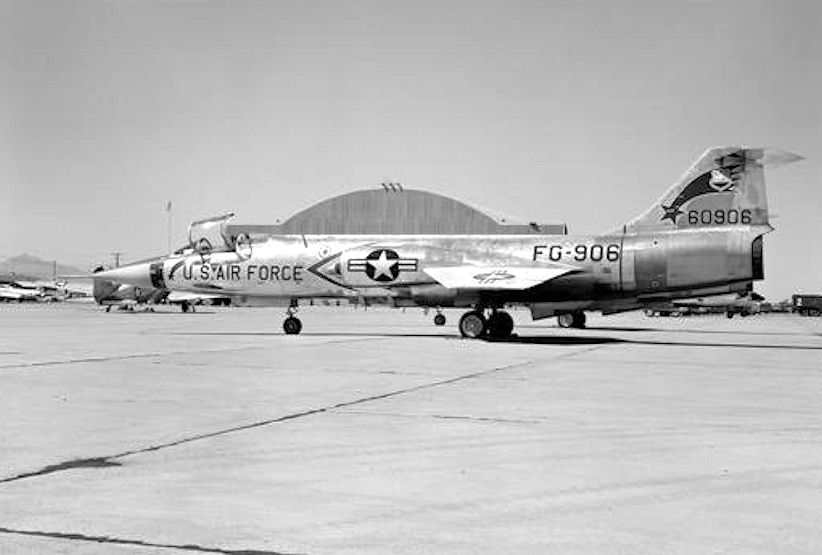
The 161st FIG was called into active service in November 1961 as the construction of the infamous “Berlin Wall” pushed the world to the brink of war. Within a month after mobilization, 750 personnel and 22 187th FIS F-104 aircraft were in place at Ramstein Air Base, West Germany as the unit took up flying daily air defense patrols at the edge of the Iron Curtain. With world tension easing, the squadron returned home in August 1962.
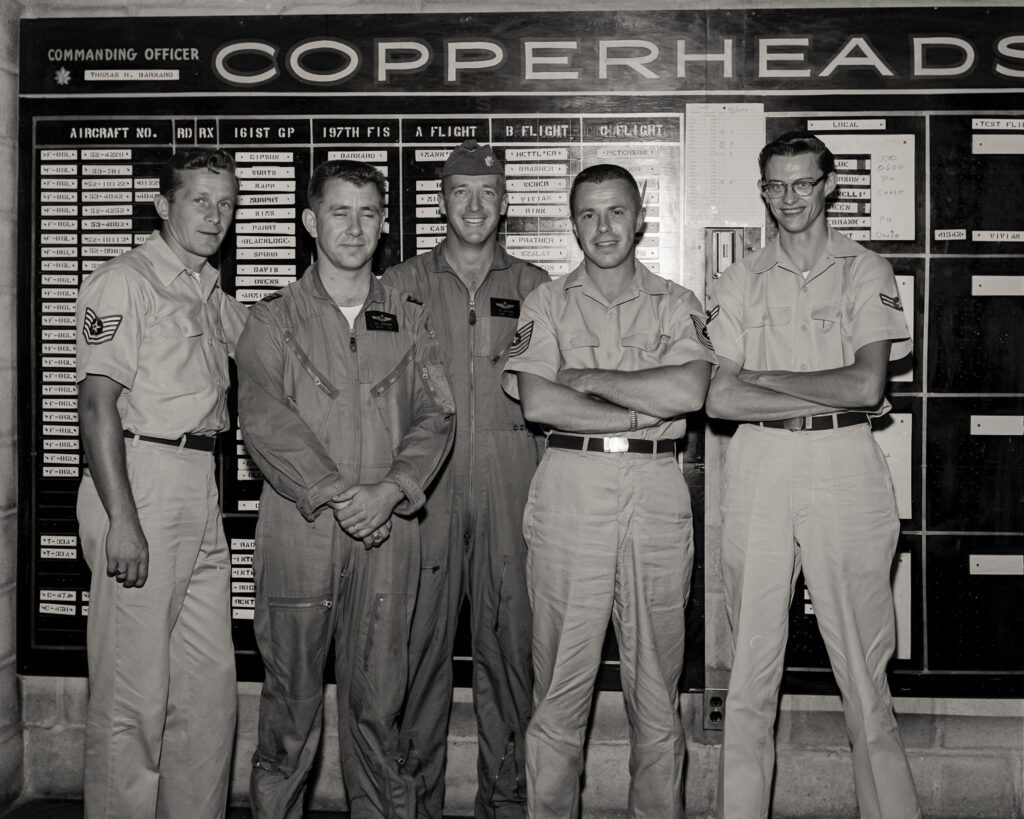
Transport mission
With the return to Arizona, the unit was reassigned from ADC to the Military Air Transport Service (MATS) in October 1962. The Mach-2 Starfighters were exchanged for large, 4-engined C-97G Stratofreighters with a mission of worldwide transport of personnel, supplies and equipment. The 197th Air Transport Squadron (later Military Airlift Squadron) flew missions to the Caribbean, Europe, Japan, South Vietnam, Thailand and Australia. During the height of the Vietnam War, the squadron routinely flew trans-Pacific medical evacuation missions from hospitals in South Vietnam, Japan, and the Philippines of wounded servicemen and women to the United States, being designated as an Aeromedical Transport Squadron. In 1969 the Military Airlift Squadron designation was returned and the unit again flew scheduled transport missions for Military Airlift Command (MAC).
Air Refueling
In 1972, military requirements resulted in a change in mission when the group was reassigned from MAC transport duties to the Strategic Air Command (SAC). Under SAC the group became an Air Refueling unit, beginning with the air refueling version of the C-97 transport, the KC-97 Stratofreighter. Familiarity with the aircraft led to a smooth transition from MAC to the new refueling mission. In 1977, SAC announced that Air National Guard refueling units would begin to upgrade to the KC-135 Stratotanker. The 197th Air Refueling Squadron has been flying the KC-135 for the past 35 years.
During the 1991 Gulf War, Air National Guard tanker units were quickly called into action. An around-the-clock airlift began to support the buildup to the conflict, Operation Desert Shield. Tankers and crews from the 161st were some of the first to arrive in Saudi Arabia. Elements of the 197th ARS were assigned to the 1709th Air Refueling Wing (Provisional), flying from King Abdul Aziz Air Base, Jeddah, Saudi Arabia.
From the start and for the duration, tankers servicing the conflict left Phoenix weekly, loaded with maintenance and support technicians who worked in the Saudi Arabian desert up to 45 days, and in some cases more. As the allies prepared to move against Iraq, aircraft crews, maintenance personnel, medics, fire fighters, security forces and food service technicians were dispatched to bases in Europe and the United States. Before the war in the Persian Gulf was concluded more than two-thirds of the force assigned to the 161st Air Refueling Group had served on active duty in some capacity to support the Middle East effort.
In 1994, 1995 and 1997 the unit deployed to Pisa, Italy where our tankers supported NATO operations in Bosnia. 1997 also saw the 161st facing challenges in the United Arab Emirates. The unit was vital to the success of Operation Deny Flight and Operation Southern Watch. 1 October 1995, marked another key change in the unit’s long history. The 161st Air Refueling Group was redesignated as the 161st Air Refueling Wing under the USAF Air Mobility Command (AMC). 1996 saw the Copperheads turn 50 years old. The unit celebrated with year-round contests and a 50th Anniversary Celebration in December.
The 161st sent about 130 personnel to Operation Northern Watch early in 1999. Based at Incirlik Air Base, Turkey, the unit supported flight operations within the northern no-fly zone over Iraq. Early in the second quarter of 1999, 161st Copperheads were quickly pressed into service over Kosovo for Operation Allied Force. Nearly 200 unit airmen served on active duty for about two months, flying 125 missions to offload almost 2.5 million gallons of fuel. The airmen returned to Phoenix in late June 1999.
Although not directly called as a unit the “Copperheads” played a vital role in support units during Operation Enduring Freedom in 2003. Many Security Forces saw duty overseas directly supporting bases while maintenance and operations personnel were called to support the ongoing operations.
In its 2005 BRAC Recommendations, DoD (the Department of Defense) recommended the distribution of the 117th Air Refueling Wing’s KC-135R aircraft from Birmingham International Airport Air Guard Station (AGS), Alabama and the 161st Air Refueling Wing, Phoenix Sky Harbor International Airport AGS (two aircraft) and two other bases. Phoenix Sky Harbor scored higher than Birmingham in military value for the tanker mission. This recommendation would take advantage of available capacity at Phoenix by increasing the air refueling squadron size from eight to ten aircraft, increasing the wing’s overall capability. It would also capitalize on the favorable recruiting environment of the greater Phoenix region that could sustain this increased squadron size.
161st Air Refueling Wing photos
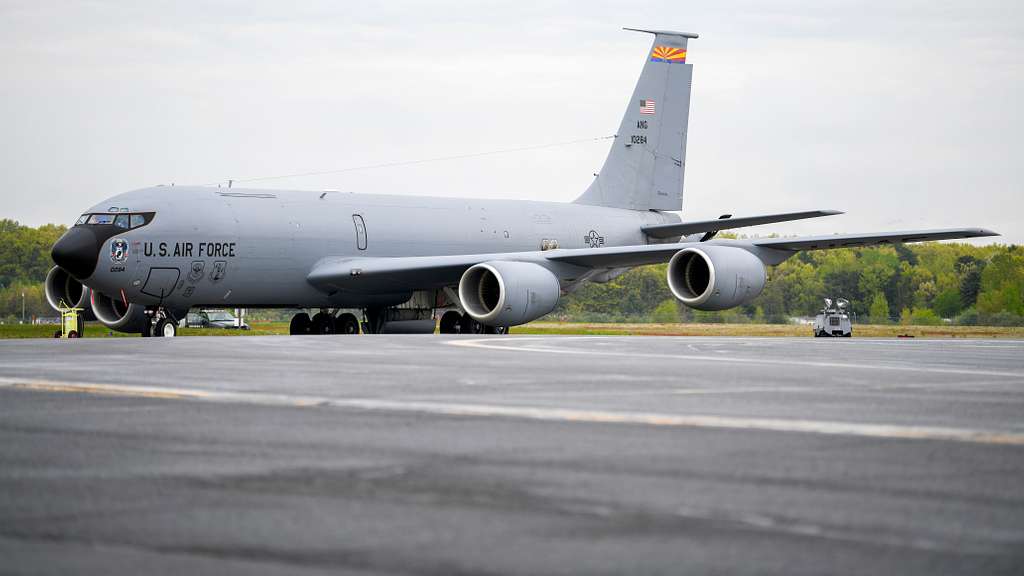
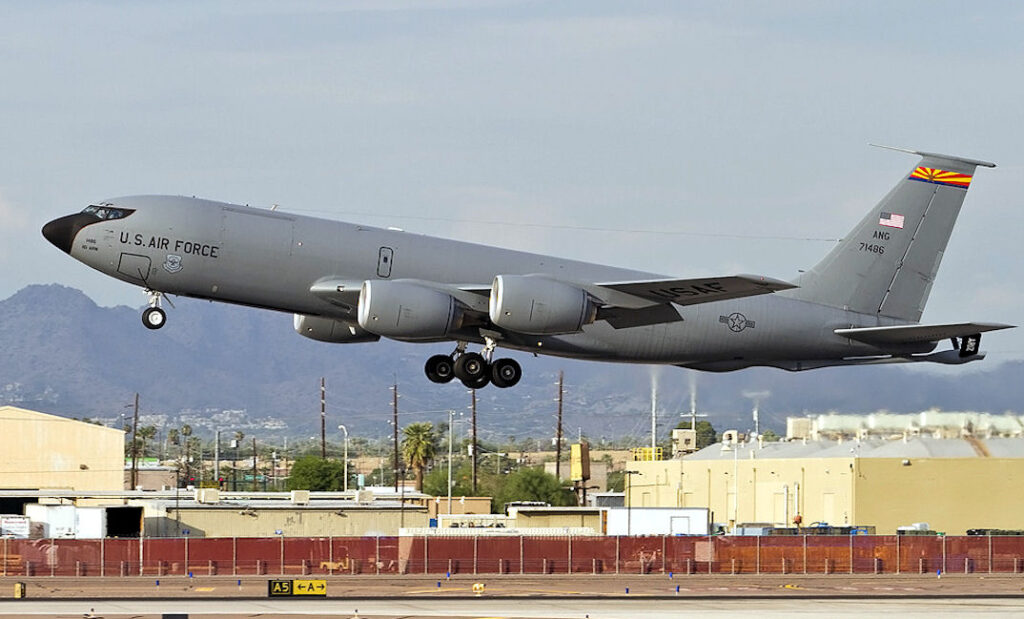
161st Air Refueling Wing patches
I am still searching for various patches from the 161st and 197th If you a spare one you are willing to part with that you see missing here, please contact me at janpeter@skytrailer.nl
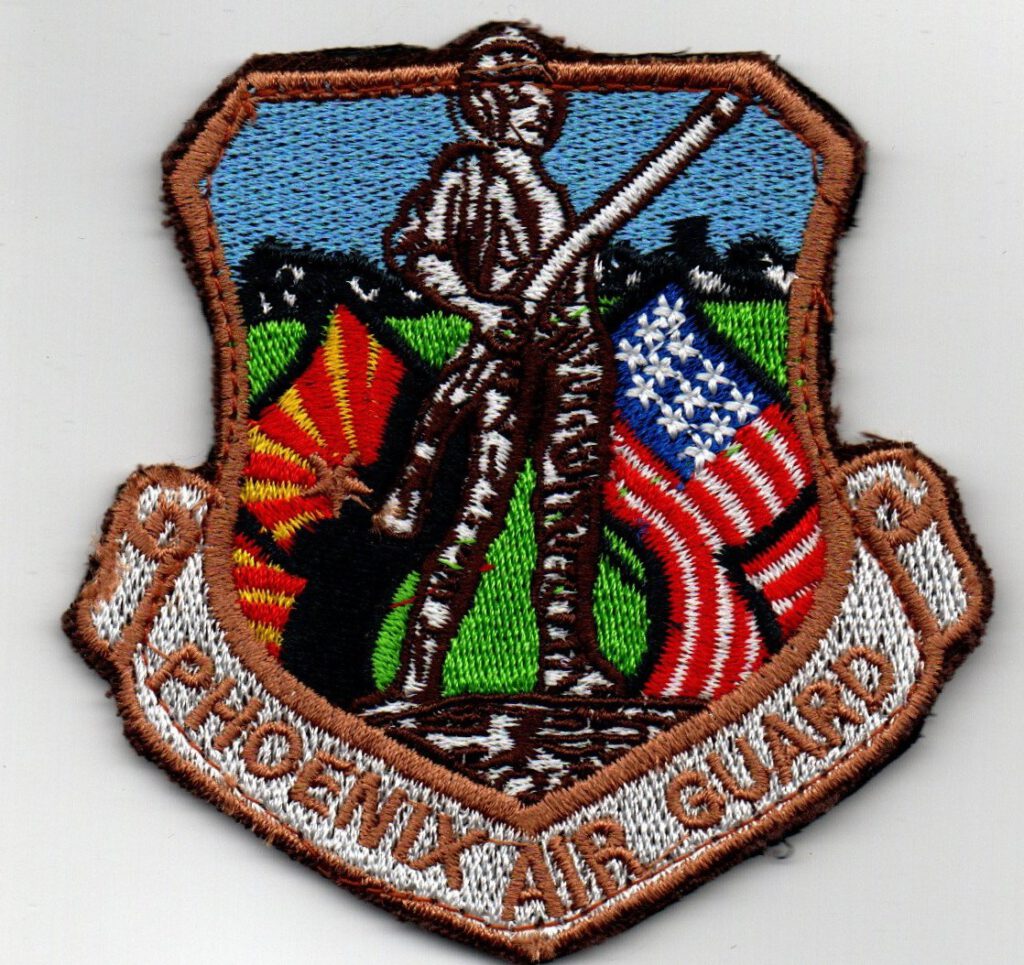

The 162nd Wing
The 162 Wing is a unit of the Arizona Air National Guard, stationed at Morris Air National Guard Base, Arizona. If activated to federal service, the wing is gained by the United States Air Force Air Education and Training Command.
On 1 July 1969, the Arizona Air National Guard 152nd Tactical Fighter Training Squadron was authorized to expand to a group level, and the 162nd Tactical Fighter Training Group was established by the National Guard Bureau. The 152nd TFTS becoming the group’s flying squadron. As part of Tactical Air Command, the 162nd TFTG’s mission was producing combat-ready pilots for the F-100 aircraft. The 152nd TFTS equipped with the F-100C Super Sabre, and the group graduated their first students in 1970. Shortly afterward, the unit formed the Air National Guard Fighter Weapons School (FWS) in Tucson. This school taught Air Guard and Reserve fighter pilots from throughout the country to effectively use advanced tactics and weapons technology.
In 1977, the group received A-7D Corsair II ground support aircraft and replaced the F-100s. In the early 1980s the group also received the A-7K, a two-seat combat-capable training aircraft derived from the single-seat A-7D. This was the first time an aircraft manufacturer produced a new aircraft specifically designed for Air National Guard use. The unit received its second Air Force Outstanding Unit Award for successfully continuing to train F-100 students while completing the most challenging conversion in the unit’s history. That tasking was to convert from F-100s to A-7Ds. In February 1984, a second squadron, the 195th Tactical Fighter Squadron was assigned to the group and additional A-7Ds were assigned. A third A-7D squadron, the 148th Fighter Squadron was assigned in October 1985. These three squadrons shared a common tail code (AZ), and the group’s aircraft were formed in a common pool from which all three squadrons used for training.
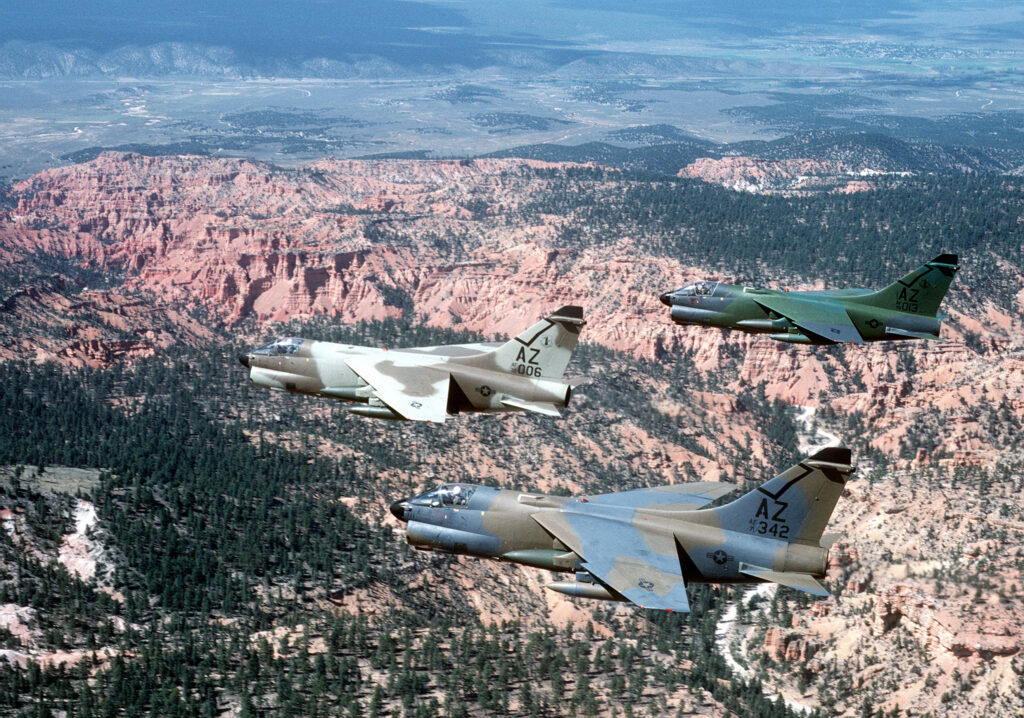
During the 1980s the unit received its fourth Air Force Outstanding Unit Award and the Spaatz Trophy. The Spaatz Trophy recognized the 162nd Fighter Wing as the outstanding Air National Guard unit in the United States. In 1985, the unit began a dual training mission using a mixture of F-16 Fighting Falcon and its A-7 aircraft. With the A-7s being retired from the inventory, conversion from the A-7D/K started in 1986 when the group started to receive older F-16A aircraft from other USAF units. The mission of the unit was to train combat-ready pilots for the Air National Guard (Replacement Training Unit or RTU), but the older F-16A Block 5 airframes were not quite suited to fulfill this mission. Therefore, a number of more modern F-16A block 15 airframes were introduced in the squadron after 1989 to be able to maintain a more modern training syllabus. The last of the A-7Ds were retired in 1992.
In 1987, the group was awarded the Sistema de Cooperacion Entre Las Fuerzas Aereas Americanas (SICOFAA), the Safety Award of the Americas. In 1989 the Netherlands and the United States formally agreed to use the 162nd Fighter Group’s first-rate facilities and people to train Dutch fighter pilots in the F-16 aircraft. In 1990 the unit received its fifth Air Force Outstanding Unit Award. Midsummer 1991 saw the retirement of all its A-7D aircraft. Now the unit flies the F-16A/B/C/D and the newer F-16E/F Fighting Falcon aircraft plus a single C-26A Metroliner light transport aircraft.
International training unit
In 1992 the status of the 162nd was upgraded from group to wing, and the ANG staff decided to modernize the training that the squadron was providing to ANG crews as well as regular USAF units or NATO F-16 pilots. Therefore, more modern F-16C block 42 airframes were delivered to the group. This opened a lot of opportunities. Beginning in April of that year, the 162nd began training fighter pilots for the Republic of Singapore, followed in 1993 by Bahrain, by Portugal in 1994, and by Thailand, Indonesia and Turkey in 1995. The unit was designated a wing in October 1995 and the international training mission continued to expand, adding Belgium in 1996 followed by Jordan and Norway in the first half of 1997. Denmark began training with the 162nd in June 1998, and Japan began training in late 1998. Italy sent their first pilot to Tucson in October 2000, Greece began training with the wing in January 2001 and the United Arab Emirates sent their first students in August 2001. Oman and Poland both began sending students in 2004. Other nations who have trained or are currently training in Tucson are Israel, Italy, Chile and Taiwan. Additional nations are currently negotiating training programs with the 162nd FW.
In addition to the training done at the ANG base in Tucson, the wing conducts training at individual client nations. Mobile Training Teams have conducted classes in numerous countries around the world, most recently in Turkey, the Netherlands, Thailand and Poland. The Thailand Mobile Training Team conducted the unit’s premier international training course, known as the Advanced Weapons Course. This program provides “graduate-level” training to assist allied nations in meeting their need for highly trained F-16 pilots.
On 9 June 1997, the wing embarked on a new mission, training international maintenance technicians on F-16 systems. Jordan sent the first six of nearly 60 technicians to observe and learn 162nd Fighter Wing maintenance techniques so they can emulate what they learn here at their home stations. The training they receive here supplements the technical training they received from the aircraft manufacturer. Italy and the United Arab Emirates have also sent their technicians to Tucson for maintenance training.
From October 1998 until August 1999, the unit conducted a program to convert three former air defense units to the general-purpose role. This air-to-ground training program taught current F-16 air defense pilots how to employ the F-16 in the ground attack mission. Air defense units from the Vermont, New Jersey, Texas and California Air National Guards transferred eight F-16C/Ds to the 162nd FW. These aircraft were used to train nearly 60 pilots from the three air defense units. Maintenance people from these states also provided maintenance support for these aircraft under 162nd Maintenance Group supervision.
Current status
On 27 June 2004, the 162nd Fighter Wing and the United Arab Emirates initiated a unique training program. The UAE F-16 Training Program is a dedicated F-16 squadron, the 148th Fighter Squadron. The squadron will operate in the long-term with 13 F-16E/F (Block 60) aircraft. The first aircraft arrived on 2 September 2004.
Along with the homeland defense mission, the 162nd FW continues its primary mission of international F-16 pilot training. The 162nd Fighter Wing now features new modern buildings, up-to-date equipment and continually updated technology that keeps pace with its rapidly changing roles and missions.
The Iraqi government purchased 36 F-16 Fighting Falcons to help rebuild their air force. However, the security situation in Iraq made delivering the aircraft impractical. The decision was made to instead deliver eight of the fighters to Tucson and continue the Iraqi Air Force pilots’ training there. The Arizona ANG’s 162nd Wing was chosen to provide the training due to its already established experience with foreign students. The wing is home to pilots in training from many nations, including the Netherlands, Norway, Singapore and Japan. All the Iraqi pilots have gone through U.S. pilot training and then move to Arizona for their F-16 training. The first two Iraqi air force F-16D were delivered on 16 December 2014.
On 1 April 2014, the unit was redesignated as the 162nd Wing, to reflect the inclusion of the 214th Reconnaissance Group into the wing
162nd Wing Photos
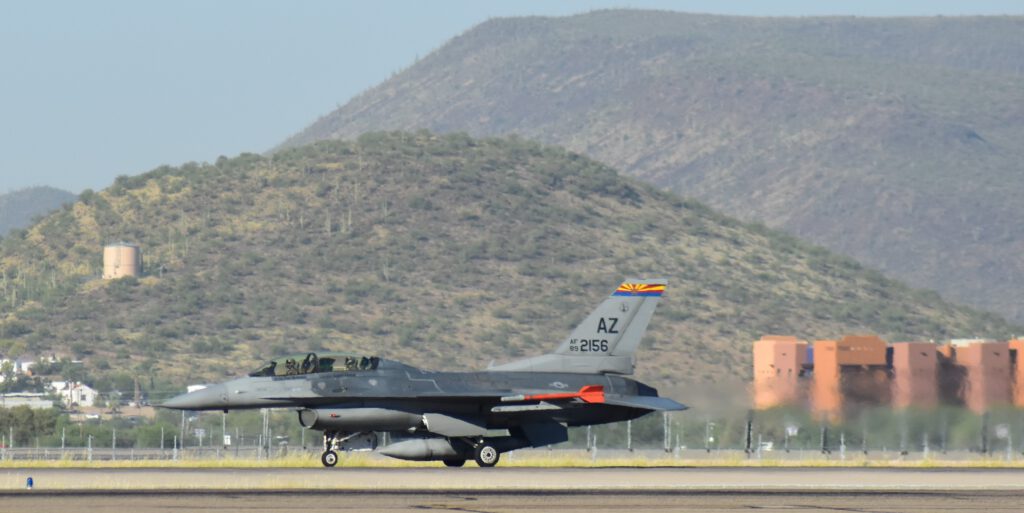
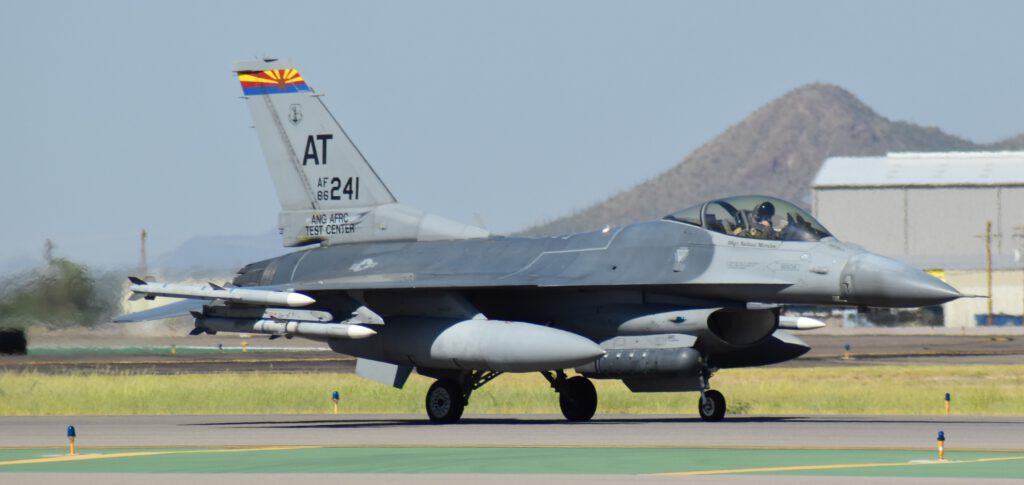

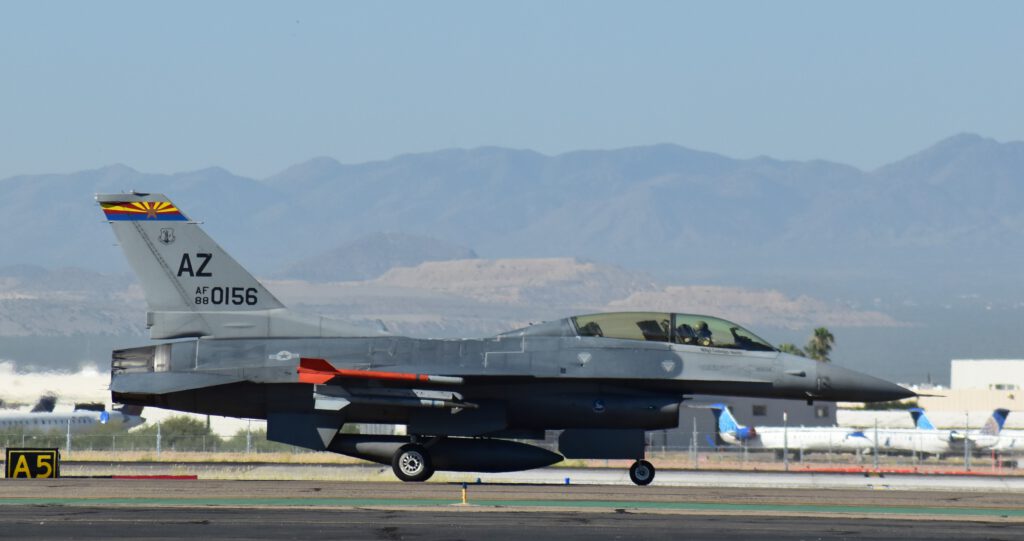
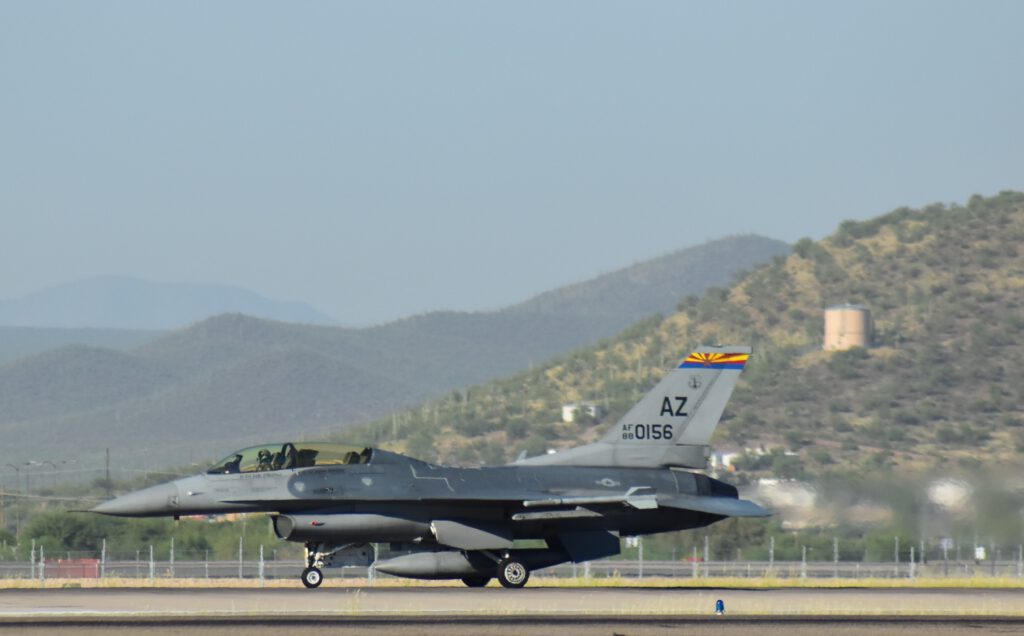
162nd Wing Patches
I am still searching for various patches from the 148th, 152nd, 195th and 162nd If you a spare one you are willing to part with that you see missing here, please contact me at janpeter@skytrailer.nl

